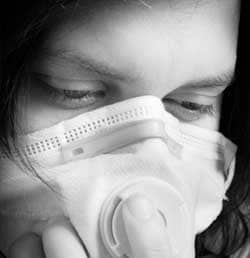What You Need to Know Before Buying an Air Purifier
The deteriorating quality of air has led to a thriving market for Air Purifiers in India.
Consumers are spoilt for choices with brands like Philips, Sharp, BlueAir, Panasonic, Eureka Forbes, Honeywell and many more selling air purifiers in the market. These can cost anything between Rs. 5000 and Rs. 95,000 or perhaps even more.
According to Global Air Purifiers Market Forecast & Opportunities, 2020, the market for air purifiers across the globe is projected to grow at a CAGR of over 14% through 2020.
Here’s a look at a few technologies used in air purifiers:
1. HEPA (High Efficiency Particulate Arrester) Filter
HEPA filter is a mechanical air filter that removes allergens and particulate matter in the air. It captures particles that are 0.3 microns in size or larger, with an efficiency of 99.99%.
2. Pre-filters
A prerequisite to the HEPA filter are pre-filters that suck in larger particles that would otherwise choke the HEPA filter.
3. Activated Carbon Filter
An activated carbon filter purifier specialises in absorbing gases and odours in the air, which helps a room smell clean.
However, because of their limited pollutant removal, most often you’ll find an activated carbon filter combined as a pre-filter with other types of filters (like HEPA or Ionic).
4. Ultraviolet Light
Ultraviolet (UV) light systems that use UV electromagnetic radiation, claim to kill pathogens such as germs, bacteria, viruses by breaking the molecular bond in their DNA. However, as per the United States Environment Protection Agency, it they are fairly ineffective inside houses.
Additionally, it does not remove dust or allergens from the air. Thus, it is best used along with other either a HEPA purifier or an ionic purifier.
5. Negative Ioniser
An ioniser air purifier releases ions or charged particles, into the air. These collide with pollutants like dust or smoke particles in the air and gives them a charge. Once charged, these particles stick to walls, curtains or any surface available. The pollutants, thus, get taken out of the air.
An ioniser does not use any filters or any other form of collection surface in itself. The air purification takes place outside the purifier.
This type of purifier cannot remove chemical pollutants or odour. Ionisation can only remove particulate pollution, not formaldehyde or Volatile Organic Compounds (VOCs).
Another problem with this type of a purifier is that it doesn’t kill the pollutants in the air, it merely deposits them on surfaces in the room. These surfaces need to be regularly cleaned up otherwise they may lead to chronic respiratory problems.
6. Photo-catalytic Oxidation
Purifiers that use this technology oxidise living organisms in the air and turns them into harmless substances inside.
7. Anti-bacterial Filters
This filter removes bacteria and makes the air sterile.
8. Electrostatic Precipitators
Purifiers with electrostatic precipitators have positively charged plates in them. Once switched on, they attract negatively charged particles, absorb particulate pollution making the air cleaner.
However, these purifiers need regular cleaning and may produce ozone as a by-product.
Of the above described technologies, “the most important are a good HEPA filter and an active carbon filter” says Barun Aggarwal, Director of BreatheEasy, a Delhi based clean-air consultancy firm. “The rest of the technologies are mostly an eye-wash and offer no positive inputs,” he says, adding that these are adopted by brands which sell these products at higher rates. Some of the other technologies can even be harmful to one’s health and further degrade the environment indoors.
For instance, negative ionisers give out negative O ions. These ions combine with oxygen (O2) in the air and for ozone (O3). Ozone is an irritant that oxidises our lungs and causes many long-term respiratory and cardiac issues.
What to Keep in Mind While Buying an Air Purifier
The most important feature to look for in an air purifier is the CADR, the Clean Air Delivery Rate, says Aggarwal. This defines the amount of air that the air purifier discharges. The more air discharged by purifiers, the faster and more efficient it is in removing air pollutants.
Given that are so many technologies used in air purifiers, be thorough with the kind of product that will suit your house or office. These technologies are used in various permutations and combinations in the many air purifiers available in the market.
One critical thing that you may want to take note of is that air purifiers are the most efficient — and the most noisy — when these are run on full speed. In order to avoid a racket, people choose to run them at a slower pace which reduces its effectiveness. Keeping this in mind, you may want to buy a size bigger than the one you’re planning to buy. This way you won’t have to compromise on its proficiency when you choose not to run it at full tilt to evade the noise.
(All the above information has been validated by Barun Aggarwal, Director of BreatheEasy, an Indoor Air Quality solution provider that serves the residential as well as the commercial sector.)





Usually I do not read post on blogs, however I wish to say that this write-up very forced me to try and do it! Your writing taste has been amazed me. Thank you, quite nice article.